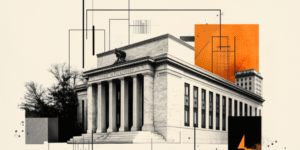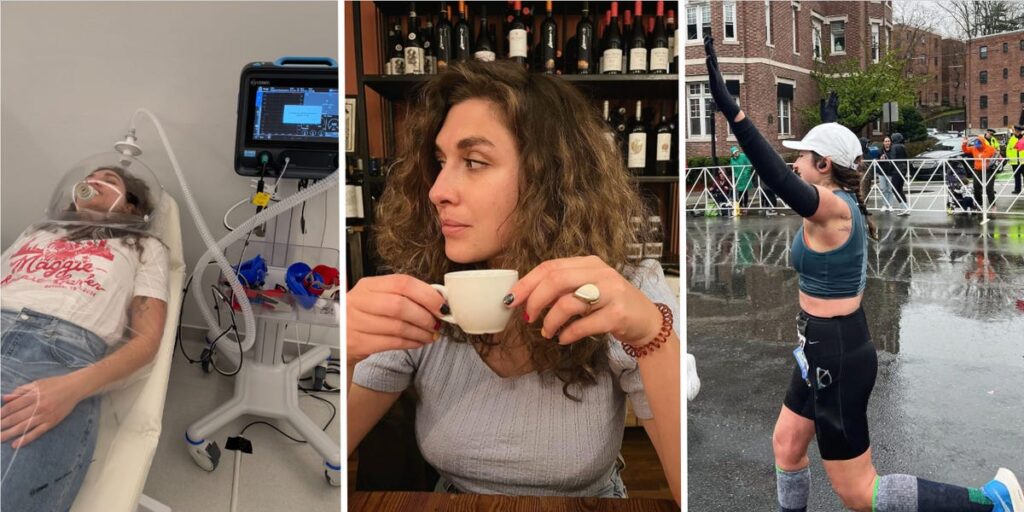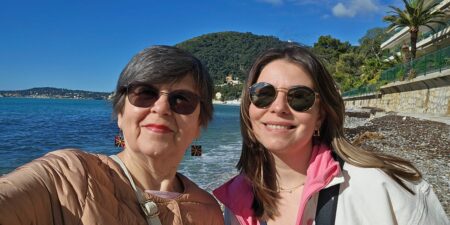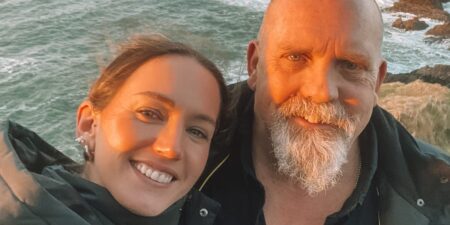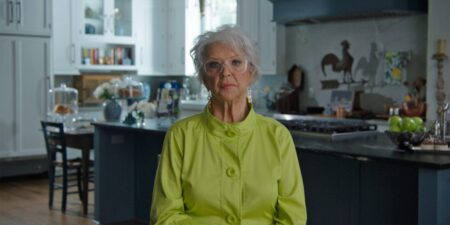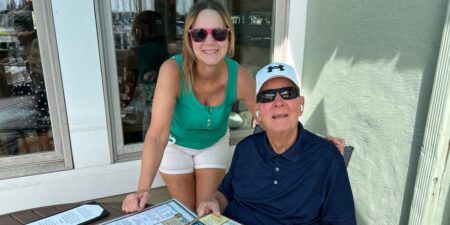I’m OK with aging — it’s a privilege to get older! I don’t feel the need to invest in expensive supplements to subtract 15 years from my biological age or get a vampire facial to look a few years younger.
At the same time, I’m a runner, trying to learn more about my body. That’s why I ended up at a longevity clinic in Lisbon, about 3,400 miles from my home in New York City.
I’d spent most of 2024 managing a few injuries. First, a grade 2 MCL tear in my left knee, after dancing in shoes that couldn’t quite handle my moves. After I was cleared to run, I went a little too hard, leading to tendonitis in the Achilles and peroneal tendons of my right foot.
I did everything you’re supposed to do: physical therapy, low-impact cardio, and strength training. Still, I felt frustrated and stagnant. Without my regular workout routine, I felt my muscles stiffen everywhere in my body, reviving a pain I get in my lower back when I’m not active.
I wanted to get to the bottom of these incessant, random aches. While staying in Portugal earlier this year, a friend, who’s a physician, recommended I check out MetaClinic, a wellness center in the heart of Lisbon. It’s marketed as a one-stop shop for wellness, offering everything from hormonal health assessments to body composition and metabolic rate testing.
While my sports doctors and physical therapists in New York City are phenomenal, it often felt like we were treating each issue separately rather than exploring how one might be leading to another. I was drawn to MetaClinic’s mission of connecting the dots within the body.
As a freelance journalist with basic marketplace health insurance, I gained more from the experience than I could have imagined for a fraction of the cost in the US. And one appointment, which I decided to tack on at the last minute, may have helped identify the cause of my years-long back pain.
I got 2 body scans to measure my muscles, body fat, and metabolism
I began with two tests commonly offered at private longevity clinics, a new kind wellness center that is booming worldwide.
First, I did the DEXA scan, a low-dose X-ray that measures your bone density, muscle mass distribution, and body fat percentage. Second, the indirect calorimetry test, a breathing assessment that measures your resting metabolic rate (or, the amount of calories you burn throughout your waking day).
Together, these cost me €190 (or $224). While these tests are available in the US, I’d never considered them since they would cost up to $1,200.
According to the clinic’s website, these scans would provide a vivid picture of how my body works. As a health journalist, I was a little skeptical about how much I could learn from five- to 15-minute tests.
“These are essential factors for health,” Dr. Andrea Maier, one of the world’s leading longevity researchers who offers these tests at her clinic in Singapore, told me.
However, she echoed my concern. These scans only give a small glimpse into the bigger picture of what’s going on with my body, she said. You need to take the findings with a grain of salt, and combine them with other tests — measuring your VO2 max and studying your diet, for example.
I wanted to try it because, according to research, muscle mass distribution can tell you a lot about a body — present and future — from heart health to disease risk. I was curious to see if my year of reduced physical activity had affected my health.
The DEXA scan was a pleasant experience. After lying still on a table for about 10 minutes while my entire body was scanned inch by inch, I got my results.
Thankfully, I learned I had minimal visceral adipose tissue (a type of harmful fat), which is linked to lower inflammation and a lower risk of age-related diseases. I felt relieved! However, my total body fat content was on the high end of the normal range, at 35.8%. My technician at MetaClinic said this range was completely fine, but Maier advised I should aim to reduce it and increase my muscle mass. That didn’t surprise me, given I hadn’t been strength training at all, as I was afraid of aggravating my injuries while abroad.
The calorimetry test was not so simple. My technician said, “It’s time to wrap you like a present,” before she put a dome-like helmet over my head and wrapped my entire body in plastic.
The goal of this 15-minute test is to measure how much energy (calories) your body burns at rest, but not when it’s asleep. It measures the oxygen you breathe in and the carbon dioxide you exhale, to see how efficiently your body is using oxygen to generate energy.
My results indicated that I burn, on average, about 1,400 kcal/day by just existing. (Research suggests this is in line with the average.)
For anyone looking to better understand how their body is changing over time, these tests can be a good starting point, but it doesn’t tell you much in a vacuum.
The osteopath identified a source of back pain I’d never considered
At the last minute, I decided to meet with the clinic’s osteopath, a licensed doctor whose medical practice looks at the whole person in a holistic sense.
I hadn’t tried this area of medicine before. In New York City, one appointment with a DO (doctor of osteopathic medicine) could cost anywhere from $135-$400 out of pocket for one appointment. Here, it cost me €60 ($70).
Looking at me, she said she could tell I’d been doing calf raises on my right foot because that calf was notably bigger than my left. To achieve muscle balance between my left and right legs, she said I should be doing my physical therapy exercises on my healthy leg, too, not just on the injured side.
Then she assessed my lower back pain. While I was lying face down on the table, she started at my feet and worked her way up. She found that my hamstrings were unusually tight. Normally, when I have back pain, my physical therapists target my glutes — right beneath the joint where I feel tightness.
I hadn’t considered that my pain could be stemming from my hamstring, and that it could be the result of my left foot taking on more of the load when walking to compensate for the discomfort in my right heel.
When I got back to New York City, I started working out biweekly with a friend who’s a personal trainer to help address these muscle imbalances. Four months in, I can’t believe how much better both my back and right heel are feeling.
Why Americans fly abroad for longevity tests
In the US, these tests don’t feel affordable. I’m glad I seized this opportunity while working in Lisbon for two months through the winter.
In total, I paid just $224 for all three of these assessments without health insurance. In the US this collection of tests would have set me back between $400 and $1,200, depending on insurance coverage.
While all of the information I got from my day at MetaClinic may just be a “starting point,” I found it helped me get a fresh perspective on how to manage discomfort on both sides of my body.
I have the New York Marathon coming up in November, so I’m actively working on getting my muscles prepared for the demands of training.
Read the full article here






